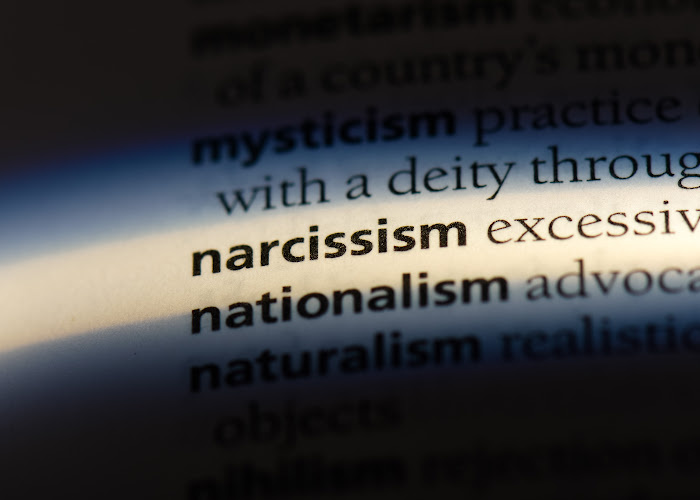It's crucial to know that students with autism and ADHD need special study strategies. Autism…

Can You Be Autistic and Narcissistic at the Same Time?
Autism and narcissism are different conditions that can sometimes appear similar. People with autism may behave in ways that seem narcissistic.
This guide dives into the differences and similarities between Autism Spectrum Disorder (ASD) and Narcissistic Personality Disorder (NPD).
It will help those affected by either condition, their loved ones, and mental health professionals understand them better.

Understanding Autism Spectrum Disorder (ASD)
Autism Spectrum Disorder (ASD) is a developmental disorder that affects social interaction and communication and includes repetitive behaviors.
Narcissistic Personality Disorder (NPD) is a personality disorder that involves an inflated sense of self-importance, a need for admiration, and a lack of empathy for others.
The main difference between these two lies in their core characteristics and how they show in a person’s behavior.
Autistic individuals may have trouble understanding social cues, maintaining eye contact, and engaging in back-and-forth conversation. They may also have repetitive behaviors like rocking or hand-flapping.
Narcissistic Personality Disorder is characterized by an inflated sense of self-importance, a need for admiration, and a lack of empathy for others.
Knowing these key differences is important when discussing the overlap between autism and narcissism, and the potential for both conditions to co-exist.

Genetic and Environmental Factors in ASD
Autism is thought to be caused by a mix of genetics and environmental factors. Research is ongoing, but genetic influences are likely.
Potential environmental triggers for Autism Spectrum Disorder (ASD) might include premature birth, having an older sibling, maternal diabetes, maternal smoking, exposure to thimerosal, flame retardants, certain infections or medications during pregnancy, and heavy metal poisoning.
On the other hand, Narcissism may have a genetic component and could also be influenced by environmental factors like childhood trauma or neglect.
Both autism and narcissism are complex conditions, and understanding their causes requires a comprehensive approach.

Diagnostic Criteria for ASD
Autism is identified by mental health experts based on certain criteria like symptoms, severity, and early onset leading to significant social issues.
Signs of Autism can include:
- Difficulty starting social interactions
- Unusual responses to others
- Trouble understanding social cues
- Reduced empathy
Diagnosis can be made as early as 18 months, and by age 2, a reliable evaluation can generally be given by a professional.
Tools used for diagnosing Autism include the Diagnostic Interview for Social and Communication Disorders (DISCO), Autism Diagnostic Observation Schedule (ADOS), and Childhood Autism Rating Scale (CARS).

Understanding Narcissistic Personality Disorder (NPD)
Narcissistic Personality Disorder (NPD) is when someone thinks very highly of themselves, needs to be admired, and doesn’t feel for others.
People with NPD often base their self-esteem on how others treat them, like getting likes on social media.
Signs of NPD can include thinking you’re very important, needing admiration, and not having empathy for others.
To know if someone has NPD, mental health professionals need to evaluate them thoroughly.
Understanding the main traits of NPD and how they’re different from Autism Spectrum Disorder is key to avoid confusion and wrong diagnosis.

Genetic and Environmental Factors in NPD
Studies suggest that both genetics and environment play roles in Narcissistic Personality Disorder (NPD) development.
Genetic factors may contribute to NPD, but they alone can’t explain its occurrence. Environmental factors like parenting styles, cultural influences, peer pressure, past traumas, and media consumption also play a part.
For instance, certain parenting styles and early childhood trauma have been linked to NPD. However, it’s important to note that these factors alone don’t determine whether someone will develop NPD.
Diagnostic Criteria for NPD
Narcissistic personality disorder (NPD) is diagnosed based on criteria in the DSM-5, which includes:
- A pattern of grandiosity
- Need for admiration
- Lack of empathy
- A high sense of self-importance
- Exaggeration of achievements and talents
- Expectation of being seen as superior
A mental health professional diagnoses NPD after assessing a long-term pattern of symptoms. This thorough evaluation helps distinguish NPD from autism, as these conditions have unique causes and symptoms, despite some similarities.

Examining the Overlap Between Autism and Narcissism
While autism and narcissism have unique characteristics, some behaviors in individuals with autism may seem narcissistic, causing confusion between the two conditions.
For instance, individuals with autism may demonstrate behavior that could be perceived as self-centered or lacking empathy. However, this does not necessarily indicate the presence of narcissistic personality disorder.
People with “high functioning” autism (previously known as Asperger’s syndrome) may exhibit certain signs in adults that could resemble those seen in narcissistic personality disorder.
This is especially true for adults. It is important to recognize these similarities while also understanding the underlying motivations and causes of such behaviors in individuals with autism and NPD.
The underlying motivation for arrogant or self-involved behavior in someone with Asperger’s could stem from their difficulty with social communication, while someone with NPD might exhibit such behavior due to a sense of superiority.
Distinguishing between the root causes of these behaviors is essential to provide appropriate support and interventions for individuals with autism or NPD.

Can Autism and Narcissism Co-occur?
Autism and narcissism can co-occur, but it is rare.
People with autism may exhibit behaviors that can be mistaken for narcissistic traits, but the underlying causes are different.
For example, individuals on the autism spectrum who demonstrate few challenges with communication and socialization may be identified as narcissists.
While no case studies directly show the co-existence of autism and narcissism, research has indicated that individuals with autism could develop narcissistic-like behavior as a way to handle social challenges.
It is essential to consider these nuances and complexities when discussing the potential co-occurrence of both conditions.

How Autism and Narcissism Can Be Mistaken for Each Other
Due to overlapping symptoms, autism and narcissism can be mistaken for each other.
For example, both conditions may share symptoms such as:
- social challenges
- difficulty in comprehending and empathizing with others
- sensory sensitivities
- inflexible thinking patterns
- preoccupation with particular interests
However, accurate diagnosis requires thorough evaluation by mental health professionals.
Mental health professionals differentiate between autism and narcissism in diagnosis by evaluating the individual’s symptoms and behaviors.
Though there may be some similarities, the overall pattern of traits and behavior is taken into consideration when making a distinction.
It is worth noting that it is possible to have both autism and narcissism, as they are not mutually exclusive.
Suspecting a misdiagnosis or an inaccurate diagnosis is concerning. It is vital to seek a second opinion from a mental health professional qualified in diagnosing and treating such conditions.

Treatment Approaches for Autism and Narcissism
Treatment for autism and narcissism includes:
- Early intervention
- Behavioral therapies
- Medication management
- Personalized treatment plans
Early diagnosis and intervention can provide individuals with these conditions the opportunity to lead a satisfying life.
Behavioral therapies, like speech and language therapy, applied behavior analysis (ABA), and behavioral therapy, can help enhance communication skills and acquire new skills for individuals with autism.

Therapy Options for Autism
Therapy options for autism include Applied Behavior Analysis (ABA), social skills training, and occupational therapy.
Research suggests that ABA is an effective intervention for treating autism, with early and intensive ABA intervention improving outcomes for children with autism spectrum disorder (ASD).
Social skills training for individuals with autism involves a structured teaching process of social skills through interventions and instructional methods, aiding them in developing appropriate social behaviors and interactions.
Occupational therapy supports individuals with autism by:
- Aiding in the development of communication skills
- Enhancing sensory processing
- Improving motor skills
- Facilitating access to their natural environments
Occupational therapists often collaborate with autistic individuals in school settings and offer assistance to both the individual and their families.

Therapy Options for Narcissism
Therapy options for narcissism include:
- Empathy and communication training, which may involve skills-based strategies to develop empathy and instruction in effective communication skills, addressing the emotional empathy deficits often seen in those with NPD.
- Cognitive-behavioral therapy (CBT), which focuses on identifying and changing negative thought patterns and behaviors associated with narcissism.
- Psychodynamic therapy, which explores the underlying unconscious conflicts and childhood experiences that contribute to narcissistic traits.
Cognitive-behavioral therapy (CBT) has been proven to be effective in treating Narcissistic Personality Disorder (NPD).
It can aid individuals in confronting and altering negative thought patterns, cultivating new coping skills, and enhancing functional outcomes.
Psychodynamic therapy for individuals with NPD focuses on exploring unconscious struggles and unresolved issues that result in the emergence and preservation of narcissistic characteristics, aiding them in gaining understanding into their underlying emotions, motivations, and patterns of connecting to others.

Supporting Relationships Involving Autism and Narcissism
Support from professionals and understanding the differences between autism and narcissism can contribute to improving relationship satisfaction and overall well-being for individuals and their loved ones.
While maintaining a relationship with someone diagnosed with either autism or narcissism, it’s significant to consider factors like:
- Understanding and accommodating their unique needs and challenges
- Establishing trust and open communication
- Being patient and accommodating
- Educating oneself about their condition
- If necessary, seeking professional guidance
- Setting boundaries and practicing self-care
Autism Speaks and Psychology Today provide resources for locating support groups for those with a loved one affected by autism or narcissism.
By seeking appropriate support and understanding the distinctions between autism and narcissism, individuals and their family members can enhance relationship satisfaction and overall well-being.

Final Thoughts
In this guide, we’ve looked at autism and narcissism. We’ve clarified their differences, similarities, and how they’re diagnosed and treated.
It’s important to understand these conditions to help those affected. Remember, accurate information and empathy can make the world more understanding for people with autism or narcissism.

Frequently Asked Questions
Below, we address some common queries about autism and narcissism, exploring their co-occurrence, differences, and potential for misdiagnosis.
Can someone be a narcissist and autistic?
Yes, it is possible for a person to have both autism and narcissism, although this co-occurrence is rare.
Do narcissistic parents have autistic children?
Narcissistic parents may display some traits that could overlap with autistic behavior, but no clear connection between the two has been established. While there have been anecdotes linking the two, further research is needed to make any conclusions.
Can someone with autism also have a personality disorder?
Yes, it is possible for someone with autism to also have a personality disorder, as research has shown that up to 15% of patients with BPD meet the criteria for ASD. Additionally, many studies suggest there is an association between ASD and personality disorders, with Cluster A and Cluster C being the most common.
What are the main differences between autism and narcissism?
Autism is marked by difficulties in social interaction, communication, and repetitive behaviors, whereas narcissism is characterized by an inflated sense of self-importance, a need for admiration, and a lack of empathy.
How can autism and narcissism be mistaken for each other?
Autism and narcissism can be easily mistaken for each other due to shared symptoms, such as problems with social interaction and empathy; however, a proper diagnosis must be done by a mental health professional.



This Post Has 0 Comments